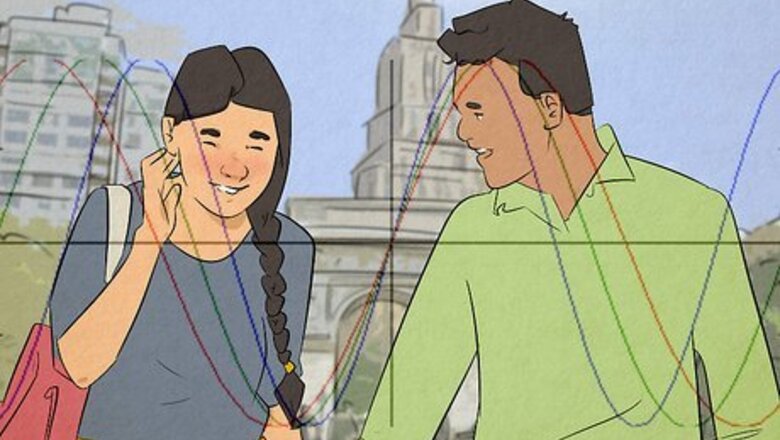
views
X
Research source
These cycles are determined by date of birth, and since they offer insight into a person’s mood and behavior, many people use them to see if they’ll “click” with others—a concept known as biorhythm compatibility. In this article, we’re providing an in-depth guide on this phenomenon, including how to calculate and analyze your biorhythm compatibility with someone else and figure out the best times to interact with them!
- Biorhythm compatibility predicts how likely you are to get along with someone during a specific time period, in terms of physical, emotional, and intellectual activities.
- Calculate your biorhythm compatibility with another person by inputting both of your birthdays in an online calculator like Biorhythm Online.
- If the amplitude of your biorhythm compatibility chart is small (close to 0), it means you're compatible with the other person. If it's large (close to ±1), you're not compatible.
What is biorhythm compatibility?
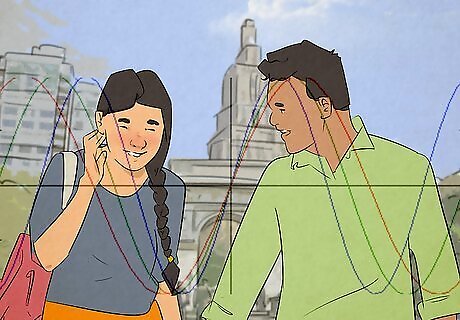
Biorhythm compatibility predicts how well you’ll get along with someone. Since biorhythms are believed to give insight into a person's mood and behavior throughout the month, many people compare their cycles with others to discover the days they’re most likely to be “in sync”—a concept known as biorhythm compatibility. This is determined by overlapping the biorhythm charts of 2 people for a specific time period, then comparing the “high” and “low” points on the chart to see when they’re similar. The smaller (close to 0) the amplitude is on your biorhythm compatibility chart, the more compatible you are with the other person. The larger (close to ±1) it is, the less compatible you are. People who share the exact same birthday are 100% compatible because their physical, emotional, and intellectual cycles are perfectly aligned.What are biorhythms? The theory that people experience 3 biological cycles each month, explaining the “highs” and “lows” of their physical, emotional, and intellectual skills. Everyone has a 23-day physical cycle, a 28-day emotional cycle, and a 33-day intellectual cycle. But, each person will have different peak performance days, depending on their date of birth.
How to Calculate Biorhythm Compatibility
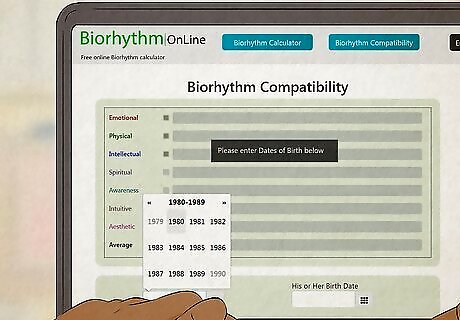
Use an online calculator to determine your biorhythm compatibility. There are hundreds of websites that offer free biorhythm compatibility calculators, including Biorhythm Online and Astrology.com. Once you input your birthday and the other person’s birthday, you’ll get access to a chart that compares your emotional, physical, and intellectual biorhythms. Plus, compatibility scores (or percentages) between you and the other person for each biorhythm. To calculate your compatibility score, the calculator averages your biorhythm levels with the other person’s biorhythm levels for each day in the cycle. Some websites also offer free in-depth analysis on your spiritual, self-awareness, and aesthetic cycles.
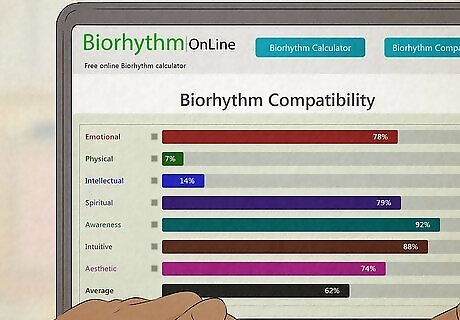
Calculate your biorhythm compatibility using various sine equations. The general formula to calculate biorhythm is y = sin(2Πt / B), where t is how many days you’ve been alive and B is the number of days in the cycle being calculated. Every day in your cycle, calculate the new t value for each biorhythm, then plug them into the general equation. Plot these points on a graph to create a biorhythm compatibility chart, or determine the compatibility percentage: calculate the mean by adding the biorhythm values for each day, then divide that value by the number of days for the corresponding cycle. To calculate how many days you’ve been alive (t): multiply your current age by 365, add on the number of days that have passed since your last birthday, then add on the number of leap days you have experienced. To calculate the biorhythm for each cycle (y), use the following equations: Physical: y = sin (2Πt / 23) Emotional: y = sin (2Πt / 28) Intellectual: y = sin (2Πt /33)
How to Use Biorhythm Compatibility

Look for peaks to discover what days you’re compatible with someone. Once you create a compatibility chart and see both biorhythms overlapped, search for any peaks or positive points on the graph for each cycle. When you and the other person experience “highs” on the same days (points above the x-axis), those are the best times to hang out with each other—you’re on the same wavelength so you’re more likely to get along. Positive days in your physical indicate high levels of energy, so invite the other person to go for a run, hit the gym, or start a own sports team with you. Positive days in your emotional cycle mean you’ll be more understanding, so use those days to work through any issues and strengthen your relationship with the other person. Positive days in your intellectual cycle suggests your focus and productivity will reach an all time high, so start a passion project with the other person or work on an assignment together.

Check for points when a line crosses the x-axis on the chart. When a cycle switches from positive to negative on the chart, or vice-versa, it is known as a critical day—a person is more sensitive or “needy” because their emotions are in a state of flux. If you or the other person experiences a critical day for any of the 3 cycles, it means you’re not 100% compatible or “in tune” with each other (for those specific days). It doesn’t necessarily mean you’ll have an argument, but it does imply extra care is needed to avoid hurting each other’s feelings. A critical day for physical cycles suggests you or the other person might be more accident prone, so avoid hitting the gym or doing anything that may potentially cause injuries. A critical day for emotional cycles means you or the other person may experience emotional outbursts, so reserve any deep or heavy conversations for another time. A critical day for intellectual cycles indicates you or the other person might have more difficulty concentrating, so try not to start any projects or big tasks together.
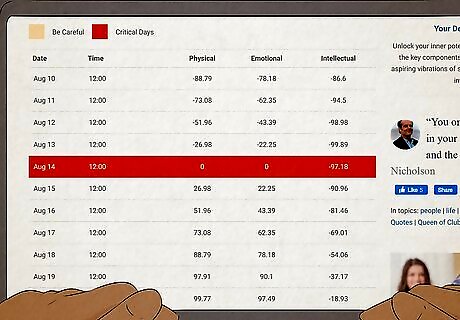
Search for negative points to see what days to avoid the other person. Analyze the chart to see when you and the other person experience minimums or negative points at the same time, and on those days, try to distance yourself as much as possible. While you’re compatible in the sense that you both share the same “lows,” it doesn’t make it easier to interact with the other person and fully engage in conversation. Forcing yourself to socialize will make you feel worse, and it could possibly strain your relationship. Negative days in your physical cycle indicates you will have less energy and tire more easily. Instead of hanging around other people, practice self care so you can rest and recharge. Negative days in your emotional cycle means you might experience moodiness and possibly depression, so schedule some alone time to boost your mood—listen to your favorite album, take a relaxing bath, or watch a new movie. Negative days in your intellectual cycle suggests your focus and productivity might be reduced, so refrain from starting new projects with the other person and reschedule any important meetings (if possible).




















Comments
0 comment